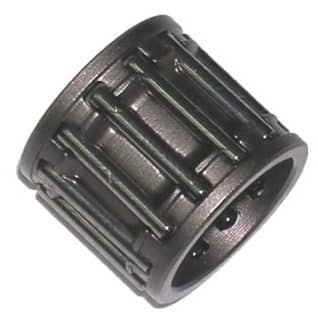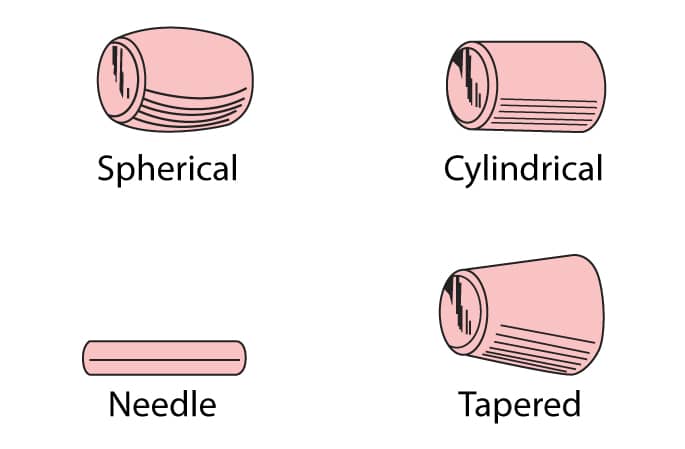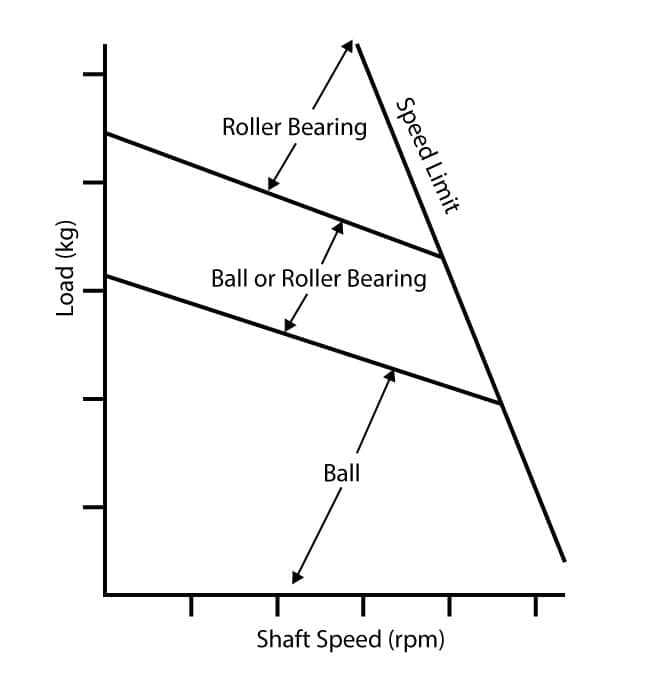Introduction
Needle roller bearings are similar to cylindrical roller bearings, but the rolling elements have a longer length to diameter ratio (typically 4:1 or more). This type of bearing is typically used where space for a standard cylindrical roller bearing is not available.

Needle Bearing (not full complement)
Needle roller bearings can carry high radial loads due to the large contact area of the rolling elements; they are not designed to carry axial loads.
Some needle bearings are equipped with an inner race, but some have no inner race. In cases where no inner race is present, the shaft forms the inner race. Shafts are often manufactured from hardened materials if they act as an inner race; the hardened material is less prone to wear which leads to a longer service life for the shaft.
Full complement type needle roller bearings have no retainer and are used for slow speed, high load applications.
Roller Bearings
There are four main types of roller bearing and each is named after the rolling elements they use.

Roller Bearing Elements
All roller bearings operate using line contact and can carry significantly higher radial loads than ball bearings; most roller bearings are poorly suited to handle axial loads.
Roller bearings have higher coefficients of friction than ball bearings and are consequently not suitable for very high-speed applications. Roller bearings do not use the term angular contact or angular load.

Bearing Suitability Graph
Related Online Engineering Courses
Anti-Friction Bearing Fundamentals
Additional Resources
https://en.wikipedia.org/wiki/Bearing_(mechanical)
http://courses.washington.edu/engr100/Section_Wei/engine/UofWindsorManual/Bearings.htm
https://www.engineering.com/Blogs/tabid/3207/ArticleID/130/categoryId/11/Bearings.aspx
